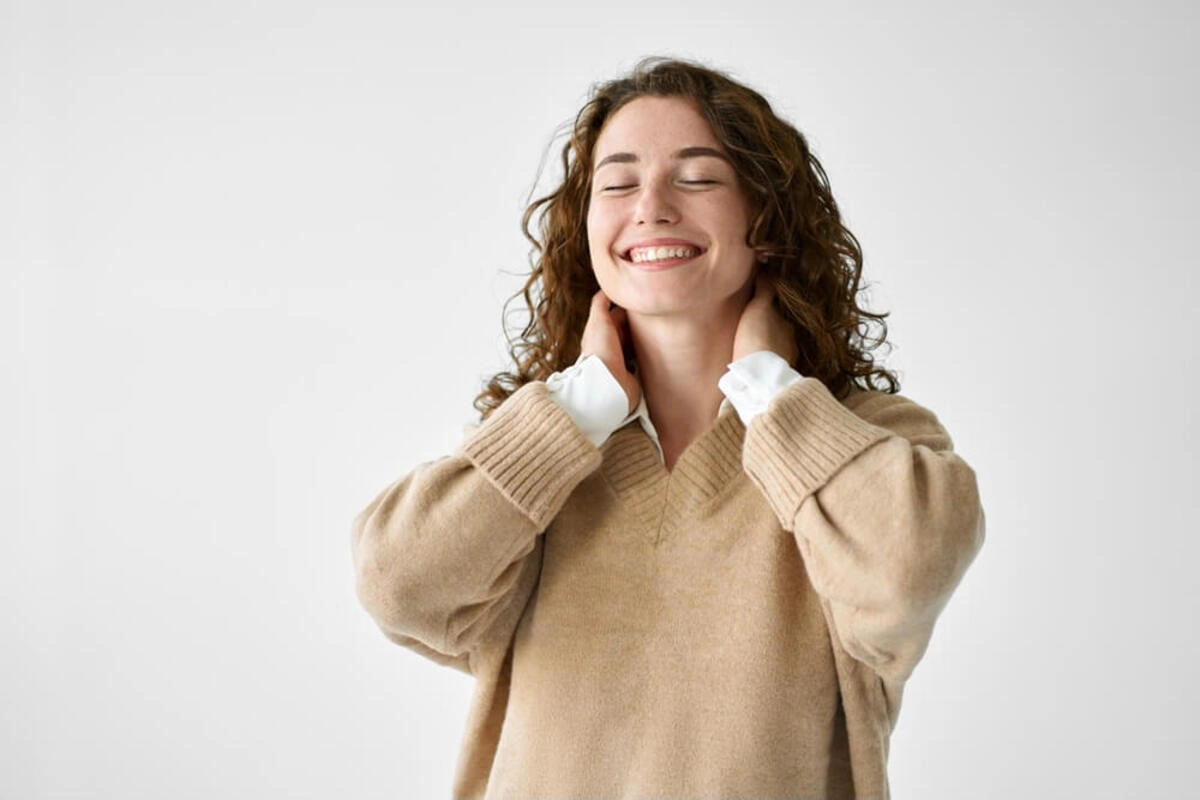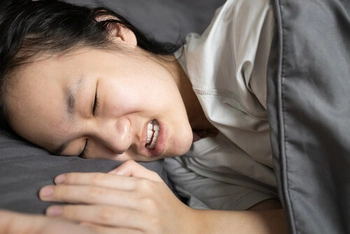Sleep is essential for overall health. However, for many people, achieving restful sleep can be difficult due to a condition known as obstructive sleep apnoea (OSA). One treatment option that has gained growing attention in sleep medicine is using oral appliances for sleep apnoea. These dental devices are designed to help maintain an open airway and improve sleep quality.
This article explains how oral appliances work and what you can expect when undergoing treatment. You’ll also learn how they compare with other options, like continuous positive airway pressure therapy.
Understanding Obstructive Sleep Apnoea

The blockage usually occurs when the muscles in the upper airway relax too much, causing the tongue or soft tissues at the back of the throat to collapse. This reduces airflow and can result in daytime sleepiness, fatigue, and reduced concentration.
OSA can vary in severity, from mild to moderate to severe, and a diagnosis is typically made through an overnight sleep study conducted by a qualified sleep specialist.
What Are Oral Appliances for Sleep Apnoea?
Oral appliances for sleep apnoea are small, custom-fitted devices worn in the mouth during sleep. They are designed to maintain upper airway patency (or openness) by repositioning the lower jaw forward or stabilising the tongue.
These dental appliances are particularly suitable for people with mild to moderate OSA or those who cannot tolerate CPAP therapy. When fitted correctly, they can help reduce snoring and improve airflow during sleep.
How Oral Appliances Work
Oral appliance therapy helps maintain open airways during sleep by gently repositioning the lower jaw (mandible) to improve airflow through the upper airway.
Among the various types available are Mandibular Advancement Devices (MADs), also called Mandibular Advancement Splints (MAS) or Mandibular Advancement Appliances (MAAs).
These custom-made oral appliances move the lower jaw forward, widening the space behind the tongue and soft palate. This forward positioning helps prevent the airway from collapsing during sleep, allowing for smoother and more consistent breathing.
By maintaining the upper airway patency, MAS can help reduce snoring and obstructive sleep episodes commonly associated with obstructive sleep apnoea (OSA).
Unlike larger, more complex devices, MAS are small, discreet, and fitted to the upper and lower teeth for comfort and stability. Their design allows them to be worn through the night without interfering significantly with normal jaw movement or sleep posture.
Custom-Made Oral Appliances vs Over-the-Counter Devices
Not all oral devices are the same. Custom-made oral appliances are tailored to fit your mouth precisely, based on impressions taken by a qualified dentist trained in sleep medicine.
Unlike generic, over-the-counter devices, custom-made options provide:
- A comfortable and secure fit
- Better clinical effectiveness
- Improved patient acceptance and long-term use
- Reduced risk of unwanted side effects such as jaw discomfort or misalignment of the upper teeth
This personalisation helps ensure the device works effectively to maintain upper airway patency and improve treatment outcomes.
Oral Appliances vs Continuous Positive Airway Pressure (CPAP)
Continuous positive airway pressure (CPAP) therapy is a treatment for obstructive sleep apnoea, particularly in severe OSA cases. CPAP delivers a stream of air through a mask to keep the airway open.
However, some people find CPAP uncomfortable or difficult to use consistently. Oral appliance therapy provides an alternative option for those with mild to moderate OSA or for those who prefer a more discreet and portable treatment.
Both therapies focus on the same goal: maintaining open airways and improving sleep quality. Still, the choice depends on individual comfort, medical needs, and your dentist’s recommendations.
What to Expect When Getting an Oral Appliance
If an overnight sleep study confirms that you have obstructive sleep apnoea, your dentist may suggest an oral appliance as part of your treatment plan.
This process involves several steps to ensure your appliance fits comfortably and functions effectively.
 1. Consultation and Assessment
1. Consultation and Assessment
During your initial consultation, your dental practitioner will examine your teeth, gums, jaw movement, and upper airway to determine whether oral appliance therapy suits you.
Factors such as your bite alignment, oral health, and the severity of your sleep apnoea will be assessed. If appropriate, your dentist will discuss how a custom-made MAS may help manage your condition and explain what to expect throughout the treatment process.
2. Custom Fitting
Once confirmed as a suitable candidate, precise impressions or digital scans of your upper and lower teeth are taken. These are used to create a custom-made oral appliance that fits your mouth comfortably.
The goal is to design an appliance that maintains upper airway patency by gently moving your lower jaw forward, without causing strain or discomfort.
3. Fitting and Adjustment
When your device is ready, your dentist will ensure it fits properly and make fine adjustments. The Mandibular Advancement Splint is designed to hold the lower jaw forward in a slightly advanced position to promote better airflow during sleep.
Your dentist may gradually adjust the appliance over time to achieve a balance between comfort and effectiveness.
4. Follow-Up and Ongoing Care
Follow-up visits are important in monitoring the performance of your oral appliance. These appointments allow your dental practitioner to check for changes in jaw position, tooth alignment, or wear on the device.
Adjustments can be made to boost comfort and maintain consistent results. Sometimes, a follow-up sleep study may be recommended to evaluate the treatment outcome and ensure the therapy achieves the desired results.
People usually find that adapting to their oral appliance takes only a few nights. Over time, it often becomes a natural part of their bedtime routine, helping support better breathing and more restful sleep.
Advantages of Oral Appliances for Sleep Apnoea
The advantages of oral appliance therapy extend beyond improved breathing. Some of the advantages include:
- Portability and ease of travel compared to CPAP machines
- Quiet operation without a power source
- Simple maintenance and cleaning
- Increased comfort for those who prefer a less intrusive option
Oral appliances support better airflow and reduce snoring and obstructive sleep interruptions when used consistently and under professional supervision.
Potential Limitations to Consider
Like any treatment, oral appliances for sleep apnoea may not suit everyone. Individuals with severe OSA or certain dental conditions may require alternative approaches or surgical interventions.
Some people experience minor side effects such as jaw stiffness, dry mouth, or tooth movement, but these can often be managed through adjustments and professional monitoring.
Frequently Asked Questions
 Can oral appliances completely treat snoring?
Can oral appliances completely treat snoring?
Many people experience a noticeable reduction in snoring and obstructive sleep events with consistent use of their oral appliance. Still, results vary depending on individual anatomy and the degree of airway obstruction.
How long do oral appliances last?
Custom-made oral appliances can last several years with proper care and periodic adjustments. Your dentist will advise when replacements or refittings are needed.
How often should I have follow-up appointments?
Follow-up visits are generally recommended every few months initially, then once or twice a year. These appointments allow your dental professional to assess the fit of your appliance, review your progress, and make any necessary modifications.
Conclusion
Choosing oral appliances for sleep apnoea can be an effective and comfortable option for managing mild to moderate OSA. These custom-made dental devices are discreet, portable, and designed to enhance breathing during sleep by gently moving the lower jaw forward or stabilising the tongue.
If you experience snoring or symptoms of sleep apnoea, consider discussing oral appliance therapy with your dentist. Proper assessment, fitting, and follow-up can help you take meaningful steps towards improving your sleep quality and overall health.
If you’ve been diagnosed with obstructive sleep apnoea or experience ongoing snoring and disturbed sleep, an oral appliance may be a suitable treatment option for you. Our experienced team can assess your needs, discuss your options, and guide you through finding the right solution for your condition.
To arrange a consultation and learn more about Mandibular Advancement Splints, contact Melbourne Dental Sleep Clinic at:
Caulfield North : (03) 9068 5355
Footscray: (03) 9068 5357
Niddrie: (03) 9068 5316
References
Healthdirect Australia. (2024, June). Obstructive Sleep Apnoea (OSA). Healthdirect. Retrieved October 22, 2025, from https://www.healthdirect.gov.au/obstructive-sleep-apnoea
Marcin, A. (2024, December 16). What Types of Sleep Apnea Devices Are Available? Healthline. Retrieved October 22, 2025, from https://www.healthline.com/health/sleep-apnea-devices
WebMD Editorial Contributors. (2024, September 21). Obstructive Sleep Apnea: Gadgets and Devices. WebMD. Retrieved October 22, 2025, from https://www.webmd.com/sleep-disorders/sleep-apnea/sleep-apnea-gadgets


 1. Consultation and Assessment
1. Consultation and Assessment Can oral appliances completely treat snoring?
Can oral appliances completely treat snoring?